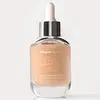What's inside
What's inside
 Key Ingredients
Key Ingredients

 Benefits
Benefits

 Concerns
Concerns

 Ingredients Side-by-side
Ingredients Side-by-side

Water
Skin ConditioningRetinol
Skin ConditioningAlpha-Arbutin
AntioxidantButylene Glycol
HumectantAscorbyl Palmitate
AntioxidantSodium Hyaluronate
HumectantSodium Acrylates Copolymer
Xanthan Gum
EmulsifyingGlycerin
HumectantLinoleic Acid
CleansingLecithin
EmollientLinolenic Acid
CleansingArachidonic Acid
EmollientAzelamidopropyl Dimethyl Amine
AntimicrobialPalmitoyl Tripeptide-1
Skin ConditioningPalmitoyl Hexapeptide-12
Skin ConditioningHydroxyethylcellulose
Emulsion StabilisingPhloretin
AntioxidantTocopherol
AntioxidantFerulic Acid
AntimicrobialBHA
AntioxidantBHT
AntioxidantEthoxydiglycol
HumectantDisodium EDTA
Bisabolol
MaskingPolysorbate 80
EmulsifyingDehydroacetic Acid
PreservativeBenzoic Acid
MaskingPolysorbate 20
EmulsifyingBenzyl Alcohol
PerfumingPhenoxyethanol
PreservativePoloxamer 407
EmulsifyingEthylhexylglycerin
Skin ConditioningWater, Retinol, Alpha-Arbutin, Butylene Glycol, Ascorbyl Palmitate, Sodium Hyaluronate, Sodium Acrylates Copolymer, Xanthan Gum, Glycerin, Linoleic Acid, Lecithin, Linolenic Acid, Arachidonic Acid, Azelamidopropyl Dimethyl Amine, Palmitoyl Tripeptide-1, Palmitoyl Hexapeptide-12, Hydroxyethylcellulose, Phloretin, Tocopherol, Ferulic Acid, BHA, BHT, Ethoxydiglycol, Disodium EDTA, Bisabolol, Polysorbate 80, Dehydroacetic Acid, Benzoic Acid, Polysorbate 20, Benzyl Alcohol, Phenoxyethanol, Poloxamer 407, Ethylhexylglycerin
 Reviews
Reviews

Ingredients Explained
These ingredients are found in both products.
Ingredients higher up in an ingredient list are typically present in a larger amount.
Glycerin is already naturally found in your skin. It helps moisturize and protect your skin.
A study from 2016 found glycerin to be more effective as a humectant than AHAs and hyaluronic acid.
As a humectant, it helps the skin stay hydrated by pulling moisture to your skin. The low molecular weight of glycerin allows it to pull moisture into the deeper layers of your skin.
Hydrated skin improves your skin barrier; Your skin barrier helps protect against irritants and bacteria.
Glycerin has also been found to have antimicrobial and antiviral properties. Due to these properties, glycerin is often used in wound and burn treatments.
In cosmetics, glycerin is usually derived from plants such as soybean or palm. However, it can also be sourced from animals, such as tallow or animal fat.
This ingredient is organic, colorless, odorless, and non-toxic.
Glycerin is the name for this ingredient in American English. British English uses Glycerol/Glycerine.
Learn more about GlycerinWater. It's the most common cosmetic ingredient of all. You'll usually see it at the top of ingredient lists, meaning that it makes up the largest part of the product.
So why is it so popular? Water most often acts as a solvent - this means that it helps dissolve other ingredients into the formulation.
You'll also recognize water as that liquid we all need to stay alive. If you see this, drink a glass of water. Stay hydrated!
Learn more about WaterXanthan gum is used as a stabilizer and thickener within cosmetic products. It helps give products a sticky, thick feeling - preventing them from being too runny.
On the technical side of things, xanthan gum is a polysaccharide - a combination consisting of multiple sugar molecules bonded together.
Xanthan gum is a pretty common and great ingredient. It is a natural, non-toxic, non-irritating ingredient that is also commonly used in food products.
Learn more about Xanthan Gum